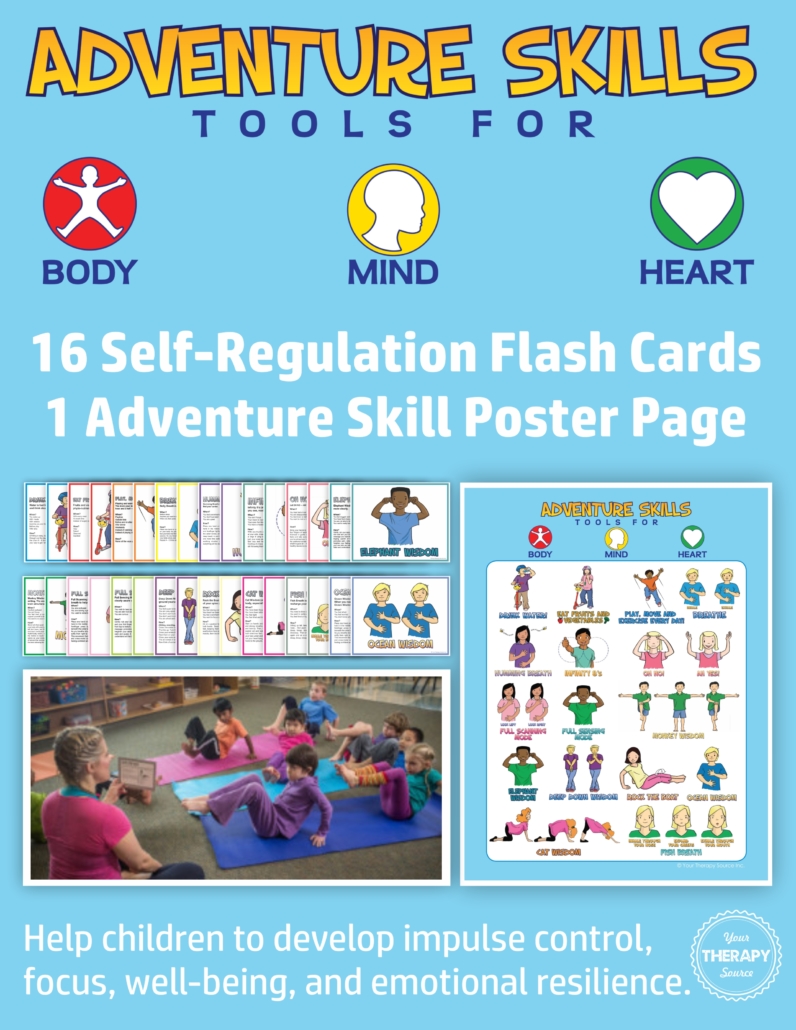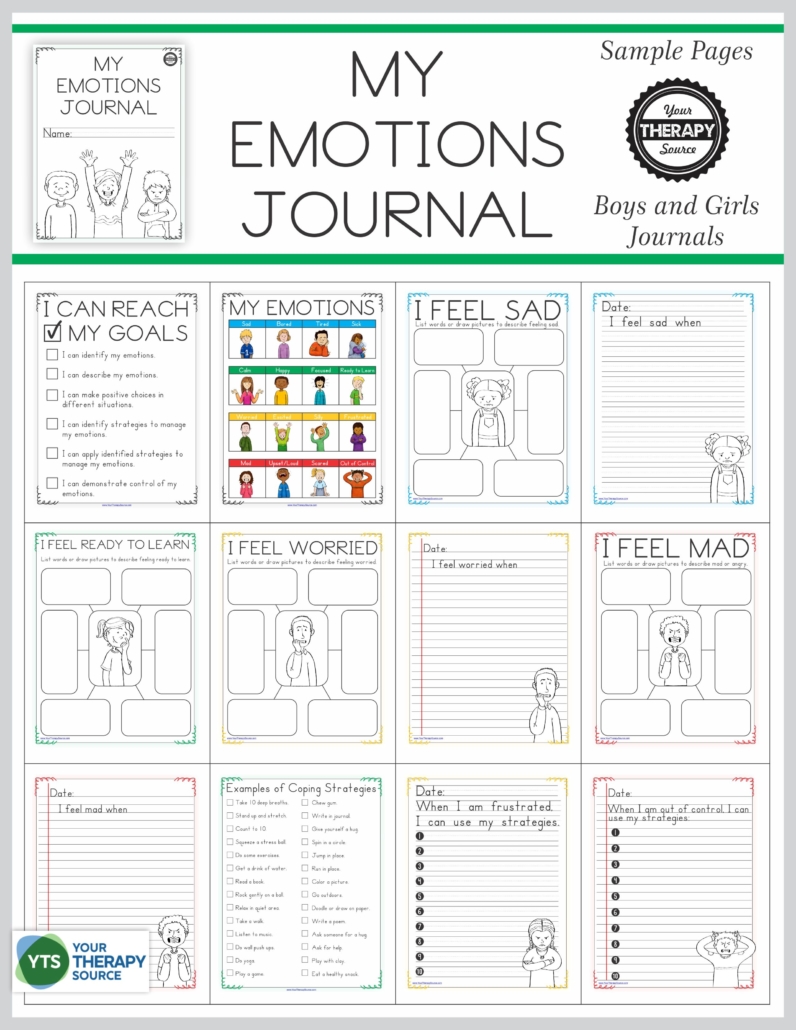10 EMOTIONAL REGULATION ACTIVITIES FOR KIDS

Do your students ever have trouble regulating their emotions? It can be tough when they’re feeling angry, frustrated, or sad and don’t know how to feel better. Luckily, there are activities that can help kids with their emotional regulation skills. Learn some emotional regulation activities for kids. You’ll help them to become happier and more well-adjusted.
WHAT IS EMOTIONAL REGULATION FOR KIDS?
Emotional regulation is the ability to understand and manage one’s emotions in a healthy way. When kids are able to regulate their emotions, it means that they’re better equipped to handle difficult situations. They can bounce back from setbacks easier. They don’t get as easily overwhelmed or upset. They’re more likely to feel calm and in control because they have coping strategies to use.
WHY IS EMOTIONAL REGULATION IMPORTANT FOR KIDS?
While it’s certainly important for kids to learn academic, social, and other skills as they grow up, developing their emotional regulation abilities is equally crucial. Emotional regulation can impact a child’s physical health and mental well-being. It can also affect problem-solving skills, relationships with others, and overall success in life.
By learning how to better regulate emotions at an early age, kids are more likely to have better mental health, a strong support system, and greater self-confidence. Emotional regulation can also help them to better manage stress and anxiety, set appropriate boundaries with others, handle challenging situations more effectively, and develop empathy towards others.

Self-Regulation Flash Cards – Updated
WHAT SHOULD YOU DO BEFORE BEGINNING EMOTIONAL REGULATION ACTIVITIES?
Before beginning any emotional regulation activities with your students, it’s important to first establish a positive, supportive environment where kids feel comfortable and safe taking risks. You may also want to speak with parents or guardians beforehand to let them know how you plan on helping their child learn these skills.
HOW TO NAME EMOTIONS WITH KIDS
One of the most important skills that kids can develop in terms of emotional regulation is the ability to name and identify their emotions. Emotions are powerful, and when we struggle to understand and label the feelings that we’re experiencing, it can be difficult to manage them effectively. Being able to name emotions helps kids understand the emotional state they are in.
DRAWING EMOTIONS: AN EMOTIONAL REGULATION ACTIVITY FOR KIDS
One fun and effective way to help kids name their emotions is to have them draw a picture or create a collage of the different feelings that they experience. You can provide prompts like, “What does it look like when you’re feeling angry?” or “How does it feel when you’re happy?” Encourage your students to be as creative as possible and use whatever materials they like.
Once they’re finished, have them share their pictures with the class or in small groups. This activity will help kids to better understand and express their emotions. It will also allow you to get a sense of how they’re feeling and what might be going on in their lives.
Try these free emoji printables with step by step drawing instructions.
WRITING ABOUT EMOTIONS
Another way to help kids name and gain an understanding of their emotions is to have them write about how they’re feeling. This can be done in a journal, on a piece of paper, or even on a chalkboard. You can start by asking your students how they’re feeling today. Then have them write down their thoughts and feelings.
Encourage them to be as honest and open as possible, and let them know that there are no right or wrong answers. This exercise can also be a great way to improve communication skills, develop empathy towards others, and build their self-confidence.

Emotional Regulation Worksheets – For Boys and Girls
MODELING EMOTIONAL REGULATION
As the saying goes, “Actions speak louder than words.” When it comes to naming emotions, this couldn’t be more true. One of the best ways to teach kids how to name their feelings is to model this behavior yourself with your own emotions.
If you’re feeling frustrated, angry, or sad, take a moment to share your emotions with your students and talk about what’s causing you to feel this way. This will help kids learn how to identify, process, and label their emotions in a healthy way. It will help them understand that it’s natural to have different emotions, and by using a little self-control emotions can be processed and expressed in a healthy way.
MEDITATION AND MINDFULNESS EXERCISES AS EMOTIONAL REGULATION ACTIVITIES FOR KIDS
Another strategy for teaching kids how to effectively regulate their emotions is to incorporate meditation and mindfulness exercises into your classroom routine. These mindfulness practices are designed to help individuals gain more control over their thoughts and feelings, build self-awareness, and increase their focus and concentration. Read more about teaching mindfulness to children.

Mindful Kids in 10 Minutes a Day – PreK to 2nd Grade
BREATHING EXERCISES
Breathing exercises are one of the most effective ways to calm and center oneself, which is why they’re such an important part of emotional regulation. When we’re feeling stressed, anxious, or angry, our breathing becomes shallower and more rapid.
To help kids regulate their emotions, you can introduce them to some basic breathing exercises. They’re a great way to quickly calm down when you’re feeling overwhelmed. Even just stopping and taking some deep breaths can help deescalate an emotional situation. Some of the most popular examples of breathing exercises include bunny breathing exercises, belly breathing, and balloon breathing.
YOGA AND PHYSICAL EXERCISE
Yoga and other physical exercises are another great tool for helping kids regulate their emotions. These activities promote mental and emotional well-being by increasing the flow of oxygen to the brain, reducing stress hormones, and improving mood. They can also help to improve self-confidence, increase energy levels, and boost resilience. Physical exercise time has been shown to reduce challenging behaviors in the classroom.

10 Minute Yoga for Kids in the Classroom
MINDFUL WALKING
One of the best ways to incorporate mindfulness into your classroom is to take breaks throughout the day for brief mindful walks. This is a great way to get your students up and moving, clear their minds, and help them stay focused throughout class. You can encourage students to take a walk with you in the hallway or outside around the school grounds.
When taking mindful walks, ask your students to focus on their breath, pay attention to all of the sounds around them, and notice the different sights and smells that surround them. This is a great way to help kids get in touch with their emotions, reduce stress and anxiety, and improve their mood.
EMOTIONAL REGULATION ACTIVITIES FOR KIDS – MINDFUL BODY SCAN
Another great exercise for teaching kids how to regulate their emotions is a mindful body scan. This is an easy activity that can be done during class or at home as a bedtime ritual.
To perform a mindful body scan, start by sitting comfortably on the floor or in a chair and closing your eyes. Then, direct your focus towards various parts of your body, starting with your toes and working your way up to your head. As you focus on each part of your body, pay attention to any sensations that you feel, such as warmth, tingling, or tension.
This exercise will help kids to become more aware of their bodies and the emotions that they’re feeling.
TALKING ABOUT EMOTIONS AS AN EMOTIONAL REGULATION ACTIVITY FOR KIDS
One of the best ways to help kids regulate their emotions is to simply talk about them. This can be done in a group setting or one-on-one. You can start by asking your students how they’re feeling today. Then encourage them to share any thoughts or feelings that they have.
It’s important to listen to what your students are saying and to validate their emotions. You can also offer advice on how to deal with certain emotions, such as anger or sadness. This is a great way to build trust and rapport with your students and to help them feel more comfortable talking about their feelings.
PRACTICING SELF-CARE
One of the best ways to help kids learn how to regulate their emotions is to practice self-care on a regular basis. This can include activities such as reading, listening to music, walking, relaxing in the bath, or playing with a pet. Don’t forget that adults need to model self care as well.
These simple acts of self-care can help kids reduce stress and anxiety, improve their moods, and increase their overall sense of well-being. It’s also important to teach kids how to identify when they’re feeling overwhelmed or stressed. This way they can take a break and practice self-care before their emotions get too out of control.
TEACH CHILDREN TO MANAGE THEIR EMOTIONS APPROPRIATELY
Teach children to assess what type of emotional reactions are appropriate for different situations. For example, the loss of a grandparent warrants a different level of sadness than not getting ice cream after dinner.
One way to help children understand this concept is by using a traffic light system:
Red Light Emotions- These are the big emotions that stop us in our tracks and make it hard to think or function normally. These include things like anger, fear, anxiety, and sadness.
Yellow Light Emotions- These are emotions that are more manageable. They don’t interfere with our ability to think or function normally. These include things like frustration, disappointment, and worry.
Green Light Emotions- These are positive emotions that make us feel good. They help us think more clearly. These include things like happiness, love, and pride.

Emotional Regulation Bingo Game
SET KIDS UP FOR HEALTHY EXPRESSIONS OF EMOTIONS
Help children understand that it’s okay to feel all emotions, but it’s important to know how to manage them appropriately. Emotions should never be ignored or suppressed, but they also shouldn’t be allowed to take over our lives.
By teaching kids how to appropriately cope with their emotions, you can help them learn healthy ways to work through stressful situations and build resilience in the face of adversity. Read more on Emotional Regulation and How You Can Help.
Download this FREE Emotion Regulation Worksheet PDF packet to get started today!
Try adding movement to your emotional regulation activities too! Check out these activities.

Self Regulation Triggers and Calming Tools



